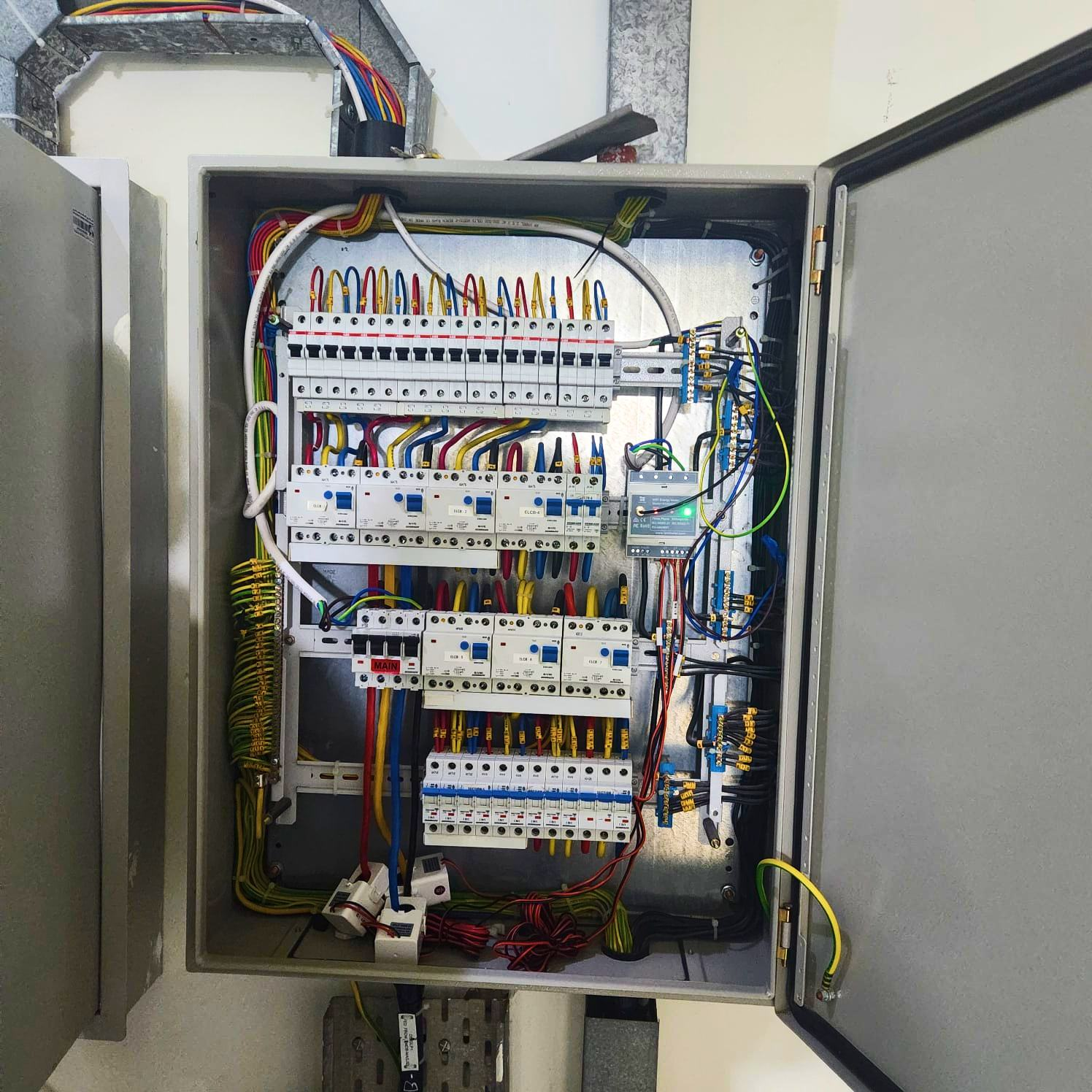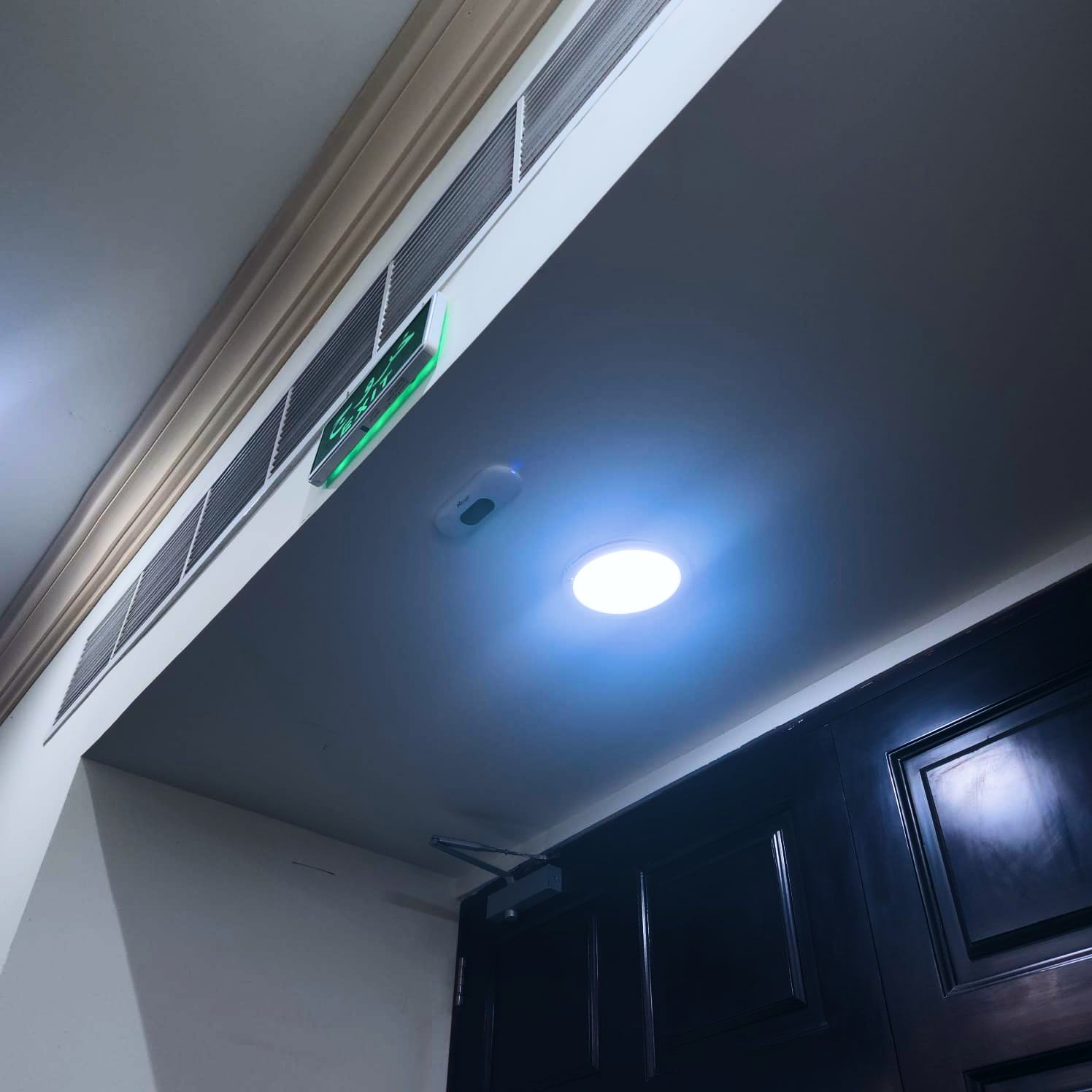TwinScape for Smart Mosque
HyperNym’s TwinScape solution transformed a Dubai mosque into a smart digital building, addressing energy inefficiency, poor air quality, and limited operational insights using IoT and AI technologies. The system optimized energy use, reduced the carbon footprint, and improved occupancy monitoring, enhancing sustainability and efficiency.
With centralized monitoring for multiple sites, TwinScape supports resource optimization and aligns with the UAE’s vision for smart, sustainable infrastructure, showcasing how technology can modernize public spaces while ensuring environmental and user benefits,
Introduction:
HyperNym’s TwinScape solution transformed a Dubai mosque into a smart digital building, addressing energy inefficiency, poor air quality,
and limited operational insights using IoT and AI technologies. The system optimized energy use, reduced the carbon footprint, and improved occupancy monitoring, enhancing sustainability and efficiency.
With centralized monitoring for multiple sites, TwinScape supports resource optimization and aligns with the UAE’s vision for smart, sustainable infrastructure, showcasing how technology can modernize public spaces while ensuring environmental and user benefits,
Challenges:
Mosques, as high-traffic public spaces, face several operational and environmental challenges, particularly during peak prayer times such as Friday prayers. These challenges are amplified when considering centralized monitoring and management for government departments overseeing multiple mosques. Key issues include:
High Energy Consumption:
Continuous operation of lighting and HVAC systems across multiple mosques, often without occupancy-based optimization, leads to significant energy wastage and increased operational expenditures at scale.
Poor Air Quality Management:
Continuous operation of lighting and HVAC systems across multiple mosques, often without occupancy based optimization, leads to significant energy wastage and increased operational expenditures at scale.
Limited Real-Time Insights:
Without centralized monitoring, government departments struggle to track footfall, occupancy, and resource utilization in real-time across multiple facilities. This lack of visibility impacts decision-making, resource allocation, and operational efficiency.
Operational Inefficiencies:
The inability to monitor and control energy, air quality, and occupancy from a single platform results in higher operational costs and inefficiencies, particularly in scaling best practices across
multiple mosques.
These challenges emphasize the need for a unified, smart digital solution that integrates IoT enabled centralized monitoring. Such a solution would empower government departments to
optimize resource usage, improve prayers experiences, and promote sustainability across their network of mosques.

Proposed Solution:
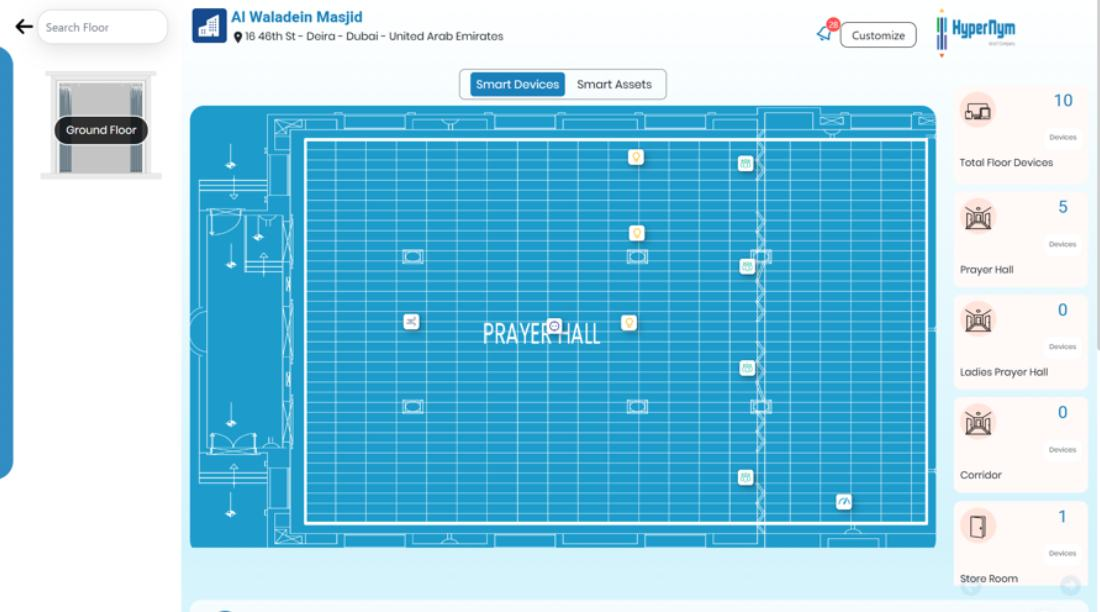
Smart Lighting Control:
Automated lighting systems intelligently adjust based on occupancy and prayer schedules, significantly reducing energy wastage during non-peak hours.
Air Quality Monitoring:
IoT sensors continuously monitor carbon dioxide (CO2) levels, enabling HVAC systems to dynamically optimize airflow for healthier and more comfortable indoor environments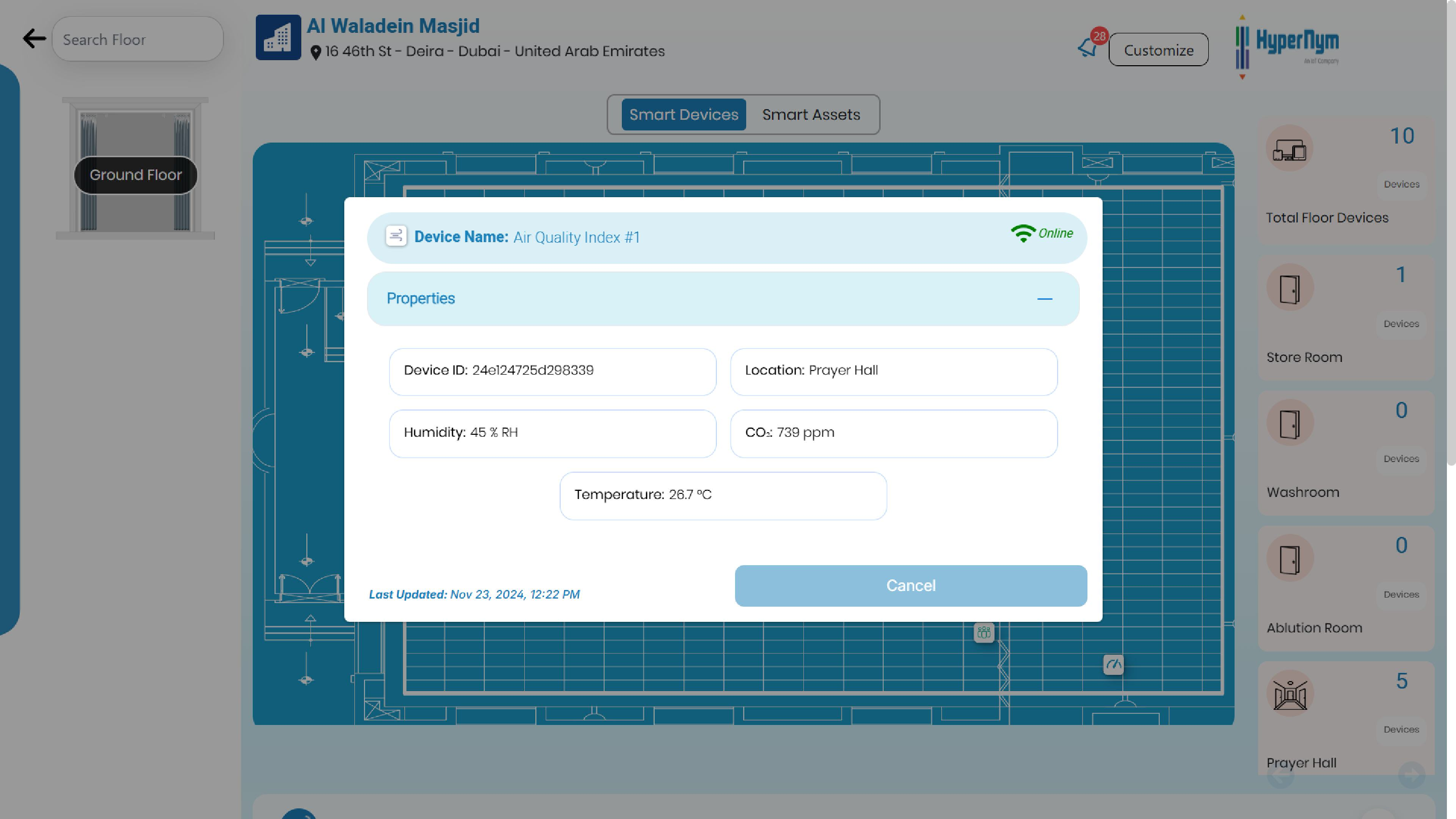
Energy Consumption Monitoring:
Real-time energy tracking across multiple mosques identifies inefficiencies and eliminates unnecessary consumption, contributing to cost savings and reduced environmental impact
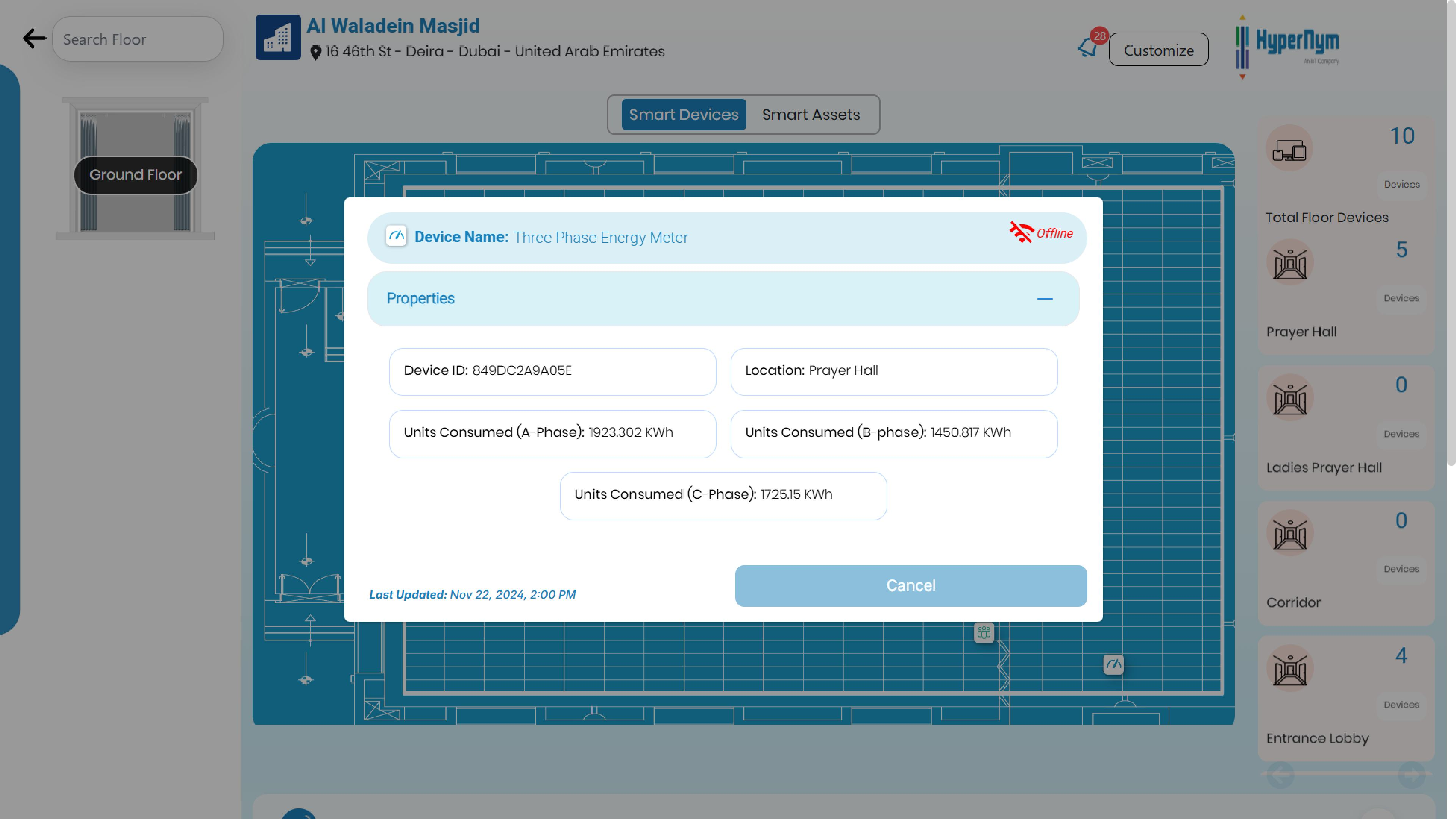
People Counting Sensors:
Strategically deployed at mosque entrances to provide accurate footfall analysis and real-time occupancy data, enhancing resource planning and enabling better crowd management during high-traffic prayer times.
Centralized Web and Tablet Applications:
User friendly platforms offering government administrators centralized, real-time analytics and actionable insights for smarter decision making and improved operational oversight across all monitored mosques.
Results, Impact, and Dashboard Insights:
The implementation of HyperNym’s TwinScape solution delivered significant results, driving energy efficiency, improving air quality, and enabling smarter operational decision-making across the mosque.
Results and Impact
Energy Optimization and Cost Savings:
The solution reduced energy consumption by over 17%, leveraging occupancy data from people counting sensors to optimize the operation of lights and HVAC systems. By identifying areas of low occupancy after prayers, energy usage was minimized, significantly lowering operational expenses (OPEX).
Improved Air Quality Management:
During peak times, such as Friday prayers, CO2 levels often exceeded 3000 ppm. The system automatically triggered alerts to notify administrators, enabling the management team to take necessary actions, such as adjusting HVAC settings or increasing ventilation. These proactive measures ensured a healthier and more comfortable environment for Prayers while maintaining optimal energy efficiency.
Enhanced Sustainability and Efficiency:
Through real-time energy consumption tracking and actionable insights, the mosque achieved notable reductions in its carbon footprint and enhanced operational efficiency.
Energy Consumption Trends:
The graphical insights below highlight the impact of the optimization measures implemented through HyperNym’s TwinScape solution. Figure 1 illustrates energy consumption before the optimization, with units recorded at approximately 70 kWh.
Air Quality Monitoring:
CO2 levels visualized across different times, helping administrators maintain optimal indoor air conditions during high footfall events.

Fig 1. Before Outcome
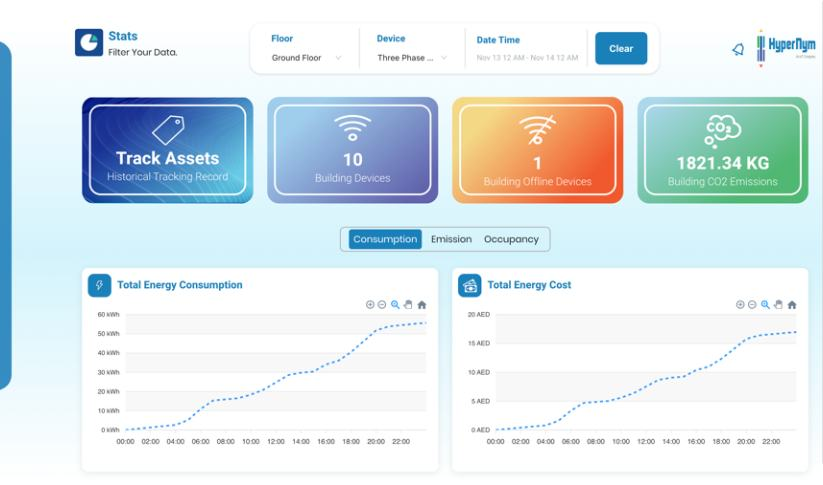
After Outcome: 17% reduction in energy usage
Dashboard Insights
The centralized dashboards provide administrators with intuitive visualizations of key metrics, including: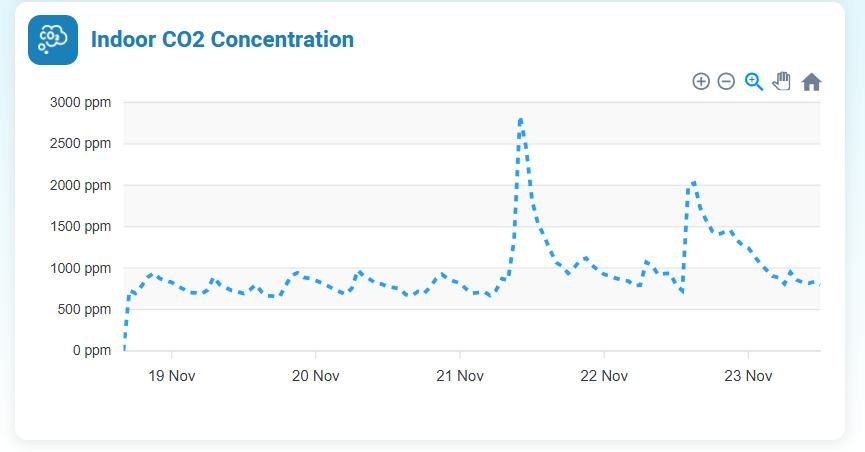
Dashboard Insights and Conclusion:
Footfall Analysis:
Detailed occupancy data from people counting sensors, presented through time series graphs and occupancy breakdowns, aiding in efficient resource allocation and improved crowd management.
Sustainability and Carbon Footprint Reduction:
The dashboard’s real-time tracking and insights facilitated significant reductions in the mosque’s carbon footprint.
By optimizing energy usage, the system directly contributed to sustainability efforts, helping the mosque lower its environmental impact. These improvements not only enhanced operational efficiency but also aligned with broader sustainability goals by reducing overall energy consumption and supporting a greener, more eco-friendly environment.These insights ensure proactive decision-making, improved sustainability, and a better overall experience for prayers. Dashboards will be included to illustrate these key results.
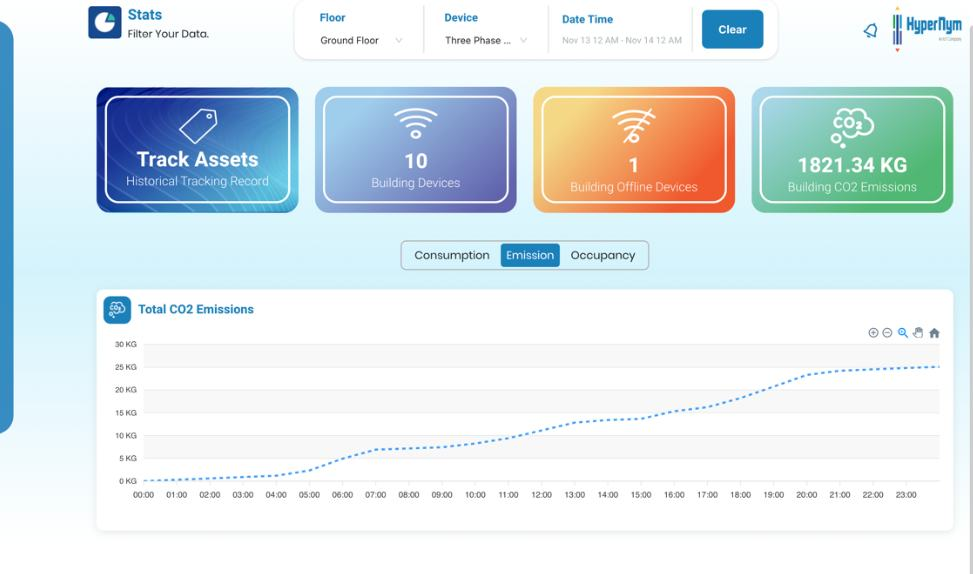


Conclusion:
HyperNym’s TwinScape solution significantly enhanced the operational efficiency and sustainability of a Dubai mosque. By leveraging IoT and AI, it provided real-time monitoring of energy consumption, air quality, and footfall, enabling better resource management and a healthier environment. Key results included a 17% reduction in energy consumption, cost savings, and a smaller carbon footprint.
Features like air quality control during peak times improved worshippers’ comfort while reducing energy waste, and footfall analysis optimized space utilization and crowd management. With centralized dashboards, the solution also supported efficient management of multiple mosques, aligning with the UAE’s vision for smart, sustainable public spaces.
Client Testimonial:
“Working with HyperNym has been a game changer. Their TwinScape solution has significantly improved our energy efficiency, enhanced air quality management, and provided actionable insights into resource utilization, aligning perfectly with our sustainability goals.”


